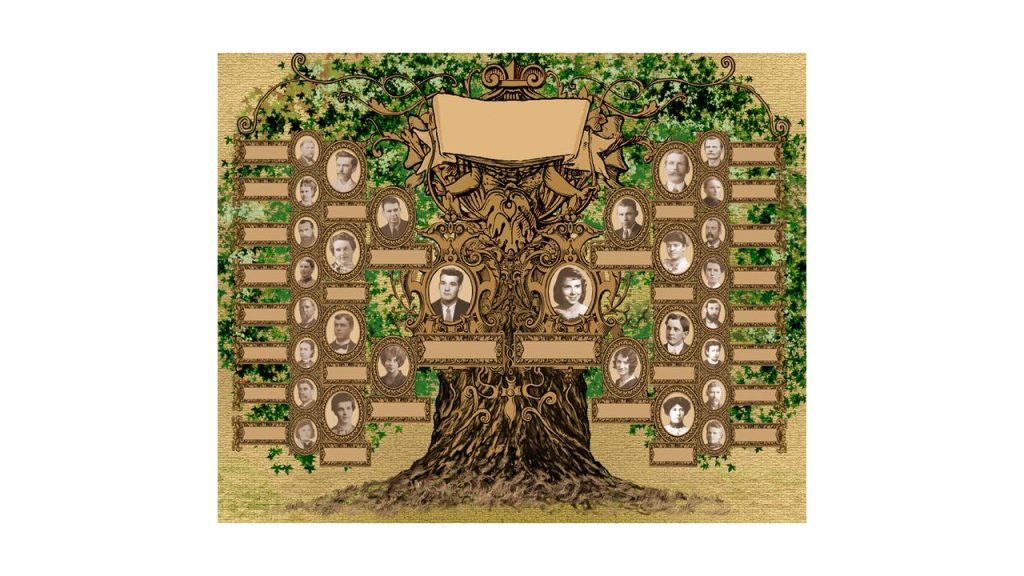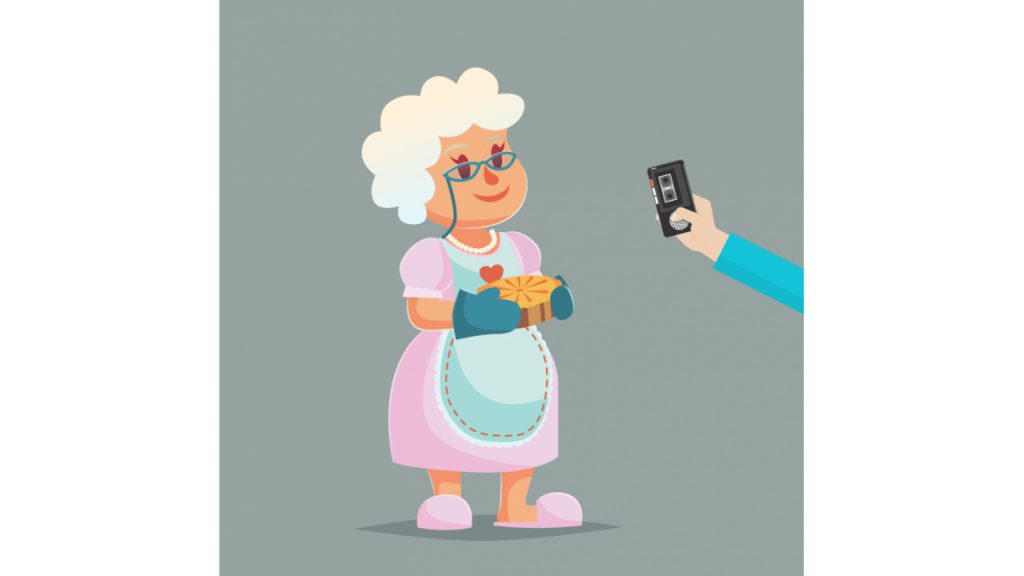Recording and Transcribing Family History Stories
We are living in very unpredictable and turbulent times, and many people get depressed just by thinking of how this year’s holiday season will be one of the most morose ever. The reason is obvious, this pandemic dramatically changed the way we live, work, socialize and celebrate. So, this year, in most cases, a big family celebration isn’t very likely to happen. But maybe this could be a good incentive to try different ways to connect family members with each other. How you ever thought that all these gatherings have an element of oral storytelling, all these bits of pieces of shared family history that spontaneously come out after a satisfying family lunch or dinner, when people are filled with warmth of being close to their loved ones, and want to share their nostalgic stories about the good old days, or maybe elicit a laugh by telling a funny anecdote from someone’s childhood.
All those feel good stories of youth and age are essential to family gatherings and if you miss them, things just won’t be right. What if we told you that maybe, just maybe, there is way to capture those nuggets of nostalgia and warmth, and that there is no need to lose out on hearing those precious family history stories. Did we catch your attention? Stay tuned for more. In this article we will explain how you can prevent the Covid Grinch from stealing your Christmas, and we will present you the ultimate weapon against missing out on all the great stories, jokes and overall jocularity that happens around the dining table and near the Christmas tree.

If your Christmas gatherings usually involved a lot of relatives, the way you could visualize their interconnection is by imagining a family tree. A well-organized family tree can graphically show you and your descendants where you came from and how everyone is related. But stories behind the family tree are just as interesting, and they form the basis of that sweet Christmas nostalgia. It is time to reconnect with your loved ones, and even shed light onto the lives of long deceased relatives that you might never have met. These things can be quite surprising, maybe you find about some distant relative whose live bore striking resemblance to your own, or you find out that there are some relatives that you have not even met yet, but they seem so great and interesting that you should initiate contact over social media at least.

Why is it important?
Keeping track of your family stories will give you and your family members a possibility to bond with each other, but also with older relatives. This is especially beneficial for the mental health of older members of the family. They will feel more valued, less lonely, and it will raise their spirits, which is really important in trying times like these. Feeling of connection with family and friends is one of the pillars of not just mental, but psychical health. Older people with more connections with the world are in general more healthy, optimistic, and they can repay each kindness by providing gems of their wisdom to younger generations. On the other hand, younger people will have a stronger self-esteem, more courage and resilience if they get to know their ancestors and their stories. They will be able to see their role in the world as stemming from a complex web of interconnected relations. The more detailed the family tree is, the more will they be able to recognize the underlying context and forces at work when it comes to their own specific place and role in the world.
How to record this?
Maybe some of you are a bit reluctant when thinking about doing interviews with family members, recording them and later listening to the tape. Most people don’t like the way they sound on tape. Also, listening to the stories on tape can sometimes be too time-consuming. This can be easily solved through the use of transcription. Today, you have at your disposal a very convenient option of transcribing your family Christmas recordings, and instead of hours and hours of sound or video recordings, you will have a neat transcription of everything that everyone said, in an easy to read and practical written form. You can even take an extra step and invest into taking all these pages of transcripts and binding them into a single book, you might even give it a title, something like “Christmas stories 2020”. Everyone will be thrilled that you made a book about their Christmas meetup.
Preparation
It is always good to prepare for family story interview. You need to know which questions to ask. Try to put yourselves in their shoes and think about which questions would you like to ask, what is important, what is not, what is funny, what is tedious, what is really worth talking about in these circumstances, find a good balance between trivial and too serious, aim for middle registers, filled with humor and feelgood vibes. You can put the questions in some sort of categories like “relationships”, “education”, “work”, or sort them by years. And let them talk. Ask the next question only when they stop talking. Some older members of the family might be very talkative and you won’t have to ask many questions but rather just listen to their stream of consciousness, but other might give you short answers and you will have to put a bit more effort into inspiring them to share their story with you.
Place and time to do the interview
Both must be convenient. It is important that both parties aren’t busy and that they can take all the time they need. Also, our suggestion is to organize two sessions, so you get the chance to follow up on some subjects you found most fascinating. Listen to the first session and find those details that are worth digging more into, and in the next session, nudge the people you are interviewing in the right direction. Try to be subtle and encouraging, let them relax enough so that they can find their specific voice, and give you the story in its best form, spontaneous and unpretentious, but at the same time meaningful, profound, a glimpse into the lives of older generations, and an instructional guide for younger generations willing to listen and embrace the wisdom that age brings.
If you are doing a live interview, face to face, you should use a digital audio recorder. You probably have one on your phone or you can install one of many famous voice recording apps. The location is also important: it should be a worm and cozy indoor place and the most important thing is that it should be quiet so that the recording quality is good. Make sure that there are no unexpected disturbances, that there are enough drinks, coffee, tea, sweets and others, make it as relaxed as possible, and let the story unfold by itself.

If you are concerned for your older relative’s health due to the current COVID situation, you can also conduct the interviews over video conference. This year there probably aren’t many people that didn’t use Zoom. It allows you to record the conversation which you can then send to a transcription service provider like Gglot and get your family story in written form in just a blink of an eye. You can also do a phone interview. This is still a very intimate way of communication which might suite most some of your elderly family members. Here you have also a vast choice of apps which allow you to record phone call conversations.
Don’t forget to state the date and your names at the beginning of the recording. Also, make sure to store the recordings adequately so that they don’t get lost. Dropbox would be our choice No. 1 for this.
Transcriptions are also a great way to preserve those interviews for a long time. There is no need not to have a great archive of your family history, based on precise transcriptions of all those interesting stories that your loved ones accumulated over the years. We at Gglot are here to help you out with that noble task. We are a well-known transcription service provider which can offer you an accurate, affordable and fast service. Sends us any audio or video recording you wish to have transcribed, and our skilled experts will send you back a very precise, easy to read and well formatted transcript of those conversations, which you can then use in many ways. You can share your family stories with all your family members. You can also send a copy to a local historical society if you want to.
Remember, talking to your family members and sharing memories is a great way to bond and grow closer together. Especially today, while we are advised to be isolated, this can be very important step to stay sane and mentally stable. Reap the many benefits that the contemporary communication technology brings and stay connected with your loved ones.